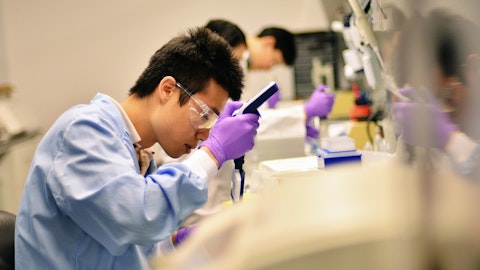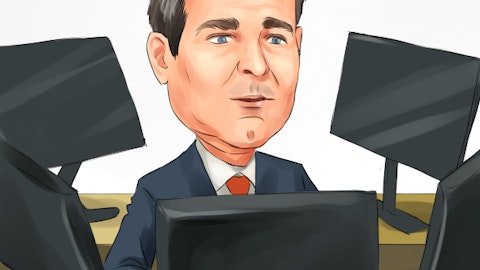Dan Rizzo: Okay. And then final question. In terms of pricing, if we hit a deflationary environment where your costs are rolling over, is there an amount you can hold onto? Is there a value-added component that makes some of the pricing you’ve taken permanent?
Andy Tometich: Yes. So, first of all, as we’ve talked previously, our model on pricing is always around value and use, and what we’re actually adding from a value proposition to our customers. And of course, we have to balance that against the cost to provide that value to them. So, that’s part of the reason why we’ve been very programmatic as we’ve moved up in our pricing, and that serves us well because we don’t have the discussions based upon what’s happening immediately in raw materials. It’s really about the benefits that we’re providing the customers. In every pass cycle for Quaker Houghton, we tend to hold on to that value and use pricing. Of course, depending upon what a rollover could look like or not with raw materials, that could have some impact, but we believe we’ll be able to maintain some of the gains we’ve made as a result of our value and use pricing.
Dan Rizzo: Thank you very much.
Operator: Thank you. Our next question comes from line of David Begleiter with Deutsche Bank. Please proceed with your question.
David Begleiter: Thank you, and good morning, and very nice first quarter. Andy, and Shane, just on the Q2 guidance, given you should have some price-cost tailwinds, higher volumes, savings from the new cost program, and lower SG&A costs, I’m unclear why EBITDA would be flat quarter-over-quarter and not up perhaps even meaningfully. What else is there that’s offsetting these potential tailwinds?
Andy Tometich: Yes. So, David, as I indicated, we’re anticipating some potential increases in volumes as we go forward, and still gaining on some gross margins. So, that’s the result that we think that we could contribute at the gross margin line with some improvements. We will have some of the sequential flow-through on our SG&A inflationary spending, which will partially offset that.
David Begleiter: Okay. And just on a new cost program, is the $20 million the entirety of the savings? And maybe just touch again on where exactly these savings are coming from. Thank you.
Andy Tometich: Yes. I’ll start that one off, David, and then I’ll ask Shane to make a few comments. So, there’s a number of actions that we’re doing in this restructuring program, this cost savings program, but they’re all in service of our growth strategy and the organization that we need to be able to implement that. We’re going to be driving both efficiency and effectiveness in the moves that we’re making. This is a global program, and the immediate focus is on Europe, and we’ve already started to make some progress there. We’ll be looking at organization optimization, as well as footprint and some supply chain efficiencies, as well as redefining how we exactly deliver customer intimacy in the most valuable way for our customers as we grow profitably.
Shane Hostetter: Yes, just going into the specific numbers, David, and a little bit more color on that, as you mentioned, the program is $20 million of annual run rate savings by the end of 2024. We did begin this in Q4 of last year, and we’ll continue to have some charges coming in the next quarters. Our total costs, we expect to be roughly 1x to 1.5x of the savings. And this really depends upon the nature and negotiation there too. As I think about run rate benefit, about three quarters of the run rate benefit probably will be in 2024 versus a quarter this year. And as I think about, I think you asked kind of where we see them going through, Andy talked about it’s a mixture of org optimization footprint and supply chain. So, we will see both reductions in SG&A as well as manufacturing costs. And just to note, savings thus far have been somewhat immaterial to our financials.
David Begleiter: Thank you.




